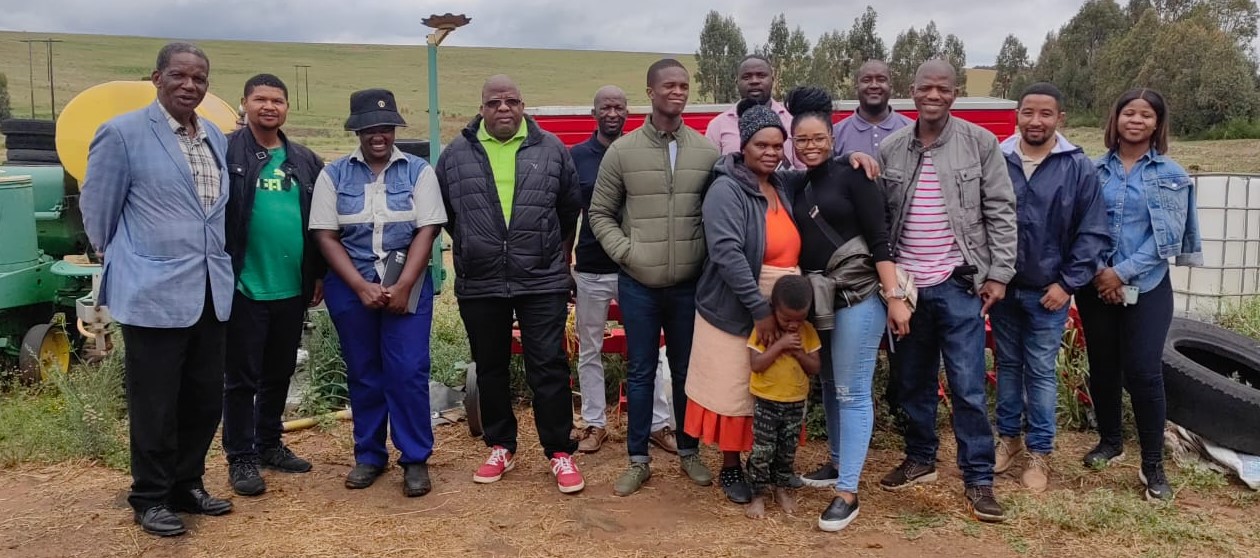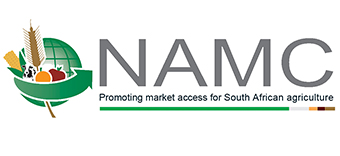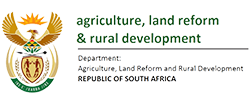REPORT ON THE DAIRY SITE VISITS CONDUCTED UNDER THE AAMP PRODUCTION SCHEME

The team from the Agriculture and Agroprocessing Master Plan (AAMP), Transformation Review Committee (TRC) which includes DALRRD, Provincial Department of Agriculture and Milk SA conducting visits to developing farms within the dairy industry
Background on the farms
On December 6th and 7th, 2023, the team from the Agriculture and Agroprocessing Master Plan (AAMP), Transformation Review Committee (TRC) which includes DALRRD, Provincial Department of Agriculture and Milk SA conducted visits to nine developing farms within the dairy industry. The primary objective of these visits was twofold: for the AAMP, it was to assess the status of the farms in preparation for the initiation of its production scheme, while for the TRC, it was to oversee and evaluate the project funded through statutory levies.
The visits commenced in Welkom, where the DEEY DAIRY Cooperative was visited. Subsequently, the Senekal Mohapi Dairy was visited, followed by visits to six farms in Harrismith: Goedehoop Dairy, Java Farm, Khayalami Farm, Manhaar Farm, Werda Farm, and Dagbreek Farm.
On average, these farms produce between 12 to 15 litres per day per cow at around R7.20 per litre.
Each farm is milking anywhere from 31 to 68 cows. The majority of these farms supply fresh milk to markets such as Nestlé and local retail stores like Shoprite, Boxer, Pick n Pay, and Spar.
Milk SA, utilizing 20% transformation funds, has supported these farmers by engaging independent consultants to evaluate the farms and provide subsequent advice. Additionally, Milk SA has facilitated the provision of milking parlours, supplied cows, electrified farms, and provided fodder.
The government has also played a significant role in supporting these farmers. Through the PLAAS program, land has been allocated to most of these farmers. Furthermore, agroprocessing facilities have been installed for two farmers, milking parlours have been constructed, and one farm has received funding through the AGRIBEE Fund.
What challenges are present?
The quantity and quality of produce from most farmers have declined due to rising feed costs and insufficient pasture development on their farms. Retailers like Woolworths are interested in sourcing from these farmers, but they struggle to meet the required quantities. There is a need for irrigation systems such as centre pivots to aid in pasture development, but many farms lack water rights and require additional boreholes. Stock theft and farm attacks pose significant threats, with one farmer narrowly escaping death. Consequently, she has invested in private security, although at high expense.
What needs to be done? by Milk SA, Farmers, AAMP Production Schemes, and other partners
The high cost of feed necessitates the establishment of pastures for each farmer to enhance both the quality and quantity of milk produced. Diversifying and expanding some of these farms to include potential agro-processing facilities represents the next level of growth for increasing income. Additionally, installing electric fences and cameras can enhance security measures. Increasing the number of milking cows is highly necessary. Finally, it is recommended to implement a production scheme for these farms, enabling them to be grouped together for economies of scale in procuring production inputs and securing markets.

